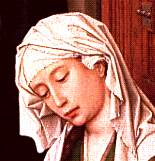Measure for Measure
A dark, sometimes bitter play, Measure for Measure is a comedy that often feels more like the tragedies Shakespeare was writing in the same period. Its preoccupation with themes of sex, morality, and the law are far removed from A Midsummer Night's Dream's and As You Like It's lovers frolicking in green woods. Set in urban Vienna, Measure for Measure depicts a near-criminal underworld that many Elizabethans would have associated with the world of the public theatres themselves.
- Sex and morality
- Crime and punishment
- The debate between justice and mercy in early drama
- Measure for measure in the Bible
- Religious orders
- Problem marriages
See also:
- A modern text of Measure for Measure.
- An old-spelling text of Folio 1.
 A list of book facsimiles
that contain Measure for Measure.
A list of book facsimiles
that contain Measure for Measure.
- The essential facts about the play.*
Footnotes
-
Summary: facts about Measure for Measure
Written:1601-1606
Registered: November 8, 1623, by Edward Blount and Issac Jaggard
First published: 1623 (the Folio)
First mentioned: 26 December 1604, a performance "By his Maiesties plaiers. On St Stiuens night in the Hall A play Caled Mesur for Mesur. Shaxberd." (Quoted from the Revels Accounts.)Source: Promos and Cassandra, a play by George Whetstone, published in two parts in 1578.
